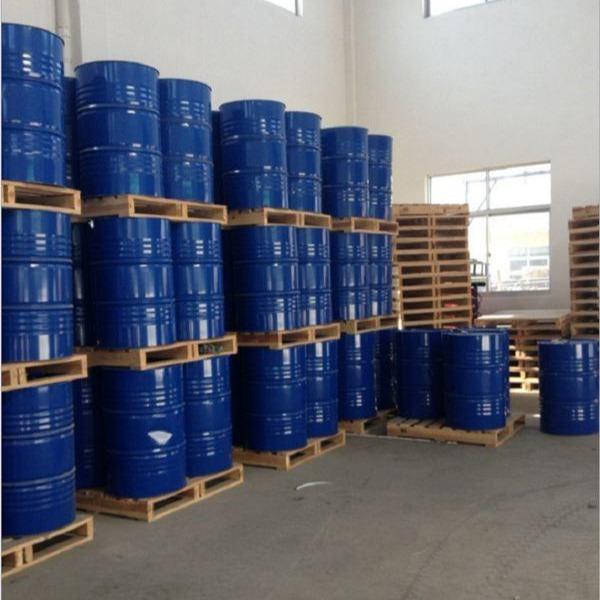-

Cyclohexane
Cyclohexane (English name: Cyclohexane) is a colorless liquid with a gasoline odor. It is insoluble in water and can be miscible with various organic solvents such as ethanol, ether, acetone, benzene, etc. The solubility in methanol is 57 parts of cyclohexane for 100 parts of methanol (25°C). It is volatile and flammable, with a flash point of 18°C. The vapor forms an explosive mixture with air, and the explosion limit is 1.3-8.3% (volume). It is relatively stable to acids and alkalis. It doe...Read more -

Heptane
There are nine isomers of n-heptane, among which n-heptane [CH3(CH2)5CH3] is the most important. It is a colorless flammable liquid. It is almost insoluble in water, slightly soluble in alcohol, and soluble in ether and chloroform. Its vapor forms an explosive mixture with air, with an explosion limit of 1.0Chemicalbook~6.0% (volume). It is separated from petroleum fractions. It vibrates violently when it burns and explodes in the cylinder. Its octane number is set as zero. Mixtures of variou...Read more -
Propionic anhydride
Properties: Due to the presence of oxygen atoms in its molecular structure, propionic anhydride has a stronger electronegativity than propionic acid and is easier to react chemically. It is an active organic chemical intermediate and has important applications in the field of fine chemicals. Application: Propionic anhydride is widely used in the fields of pesticides and medicines. It is an important organic synthetic raw material, especially in pesticides. It mainly supplies the production ne...Read more -

Acetic anhydride
Acetic anhydride (chemical formula: (CH3CO)2O) is the simplest isolable anhydride of a carboxylic acid, is widely used as a reagent in organic synthesis. It has an internal asymmetric structure, leading to its potent electrophilicity. In organic chemistry, it is mainly used in acetylation for the manufacture of commercially significant materials, e.g. it can be used for the conversion of cellulose to cellulose acetate and aspirin. It can also be used as a wood preservative. In starch industry...Read more -

Isobutyric anhydride
Isobutyric anhydride is an important derivative of isobutyric acid. It can be used as an intermediate for the synthesis of pesticides and drugs, and to prepare isobutyrate plasticizers, flavors, and fragrances. It is an important organic chemical raw material.Read more -

Butyric anhydride
Chemical properties: Colorless transparent liquid with unpleasant odor. Relative density 0.9668 (20/20℃), melting point -75℃, boiling point 198℃. Soluble in organic solvents such as ether. Decomposes into butyric acid when in contact with water. Reacts with alcohol to form esters. Chemical properties Colorless transparent flammable liquid. Soluble in water and decomposes into butyric acid, soluble in ether. Uses: \Used in the preparation of butyric acid esters, spices and cellulose butyrate, ...Read more -

Butyric Acid
Chemical properties: Colorless oily liquid with irritating and unpleasant odor. Miscible with water, ethanol and ether. Uses 1. Used to determine the critical temperature and surface tension of fat dissolution, to eliminate the influence of iron when measuring copper by electrolysis, and also used as an extractant and decalcifying agent 2. Used to prepare spices, medicines and other organic chemicals, and also used for leather deashing. Butyric acid is a food flavoring allowed by my country&#...Read more -

Isobutyric acid
Isobutyric acid is a colorless oily liquid with a pungent smell similar to butyric acid. Relative density 0.949 (20°C), melting point -47°C, boiling point 152~155°C, flash point (closed cup) 7Chemicalbook 6.67°C, refractive index 1.3930 (20°C). It is easily soluble in water and miscible with ethanol, ether, chloroform, etc. Isobutyric acid exists in a free state in rice, beans and the roots of Arnica montana.Read more -

1-Bromopropane
n-Propyl bromide is a colorless transparent liquid and is an industrial chemical product. 1-Bromopropane is a colorless or light yellow transparent liquid, neutral or slightly acidic, sensitive to light, m.p.-Chemicalbook 110℃, b.p. 71℃, relative density 1.357 (20℃), n20D 1.4341, can be mixed with alcohol and ether in any proportion, slightly soluble in water.Read more -

Bromoethane
Ethyl bromide has the common properties of monohalogenated alkanes. It can be hydrolyzed to produce ethanol, react with sodium cyanide to produce propionitrile, react with ammonia, alcohol, and hydrogen sulfide to produce amines, ethers, and mercaptans respectively, and react with magnesium in anhydrous ether to produce Grignard Chemicalbook reagent. Therefore, ethyl bromide can be used to synthesize a variety of organic substances. Toxic! It is easily decomposed under light or flame to produ...Read more -

Isopropyl acetate
Chemical properties: Colorless transparent liquid with fruity aroma. Volatile. Miscible with most organic solvents such as alcohol, ketone, ether, etc. 2.9% (by weight) dissolved in water at 20°C. Uses: 1. Mainly used as a solvent for coatings, printing inks, etc., and is also a commonly used dehydrating agent in industry, an extractant and a flavoring component in drug production. It is mainly used as a drug extraction solvent, coating solvent, printing ink solvent, chemical reaction solvent...Read more -

Isoamyl acetate
Chemical properties: Colorless transparent liquid with pleasant banana aroma. Volatile. Miscible with organic solvents such as ethanol, ether, benzene, carbon disulfide, and almost insoluble in water. Uses: 1. Widely used to prepare various fruity edible flavors, such as snow pear, banana, etc., and also used in tobacco and daily cosmetic flavors in appropriate amounts. It can be used in flavors such as heavy floral and heavy oriental flavors such as chypre, osmanthus, hyacinth, etc., which c...Read more





